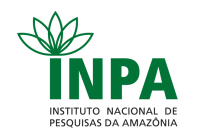Corpo Discente - Egressos
Jairo Osvaldo Rodriguez Leiva
| Título | ANÁLISE FRACTAL E MULTIFRACTAL DA RESISTÊNCIA DO SOLO À PENETRAÇÃO | ||||||||||||||||||||||||
| Data da Defesa | 26/11/2018 | ||||||||||||||||||||||||
| Download | Em sigilo | ||||||||||||||||||||||||
Banca
| |||||||||||||||||||||||||
| Palavras-Chaves | Função de partição; Espectro de singularidade; Modelagem matemática; Compactação do solo; Manejo e conservação do solo. | ||||||||||||||||||||||||
| Resumo | A produtividade das culturas é afetada negativamente pela resistência do solo à penetração (RP), podendo essa RP interferir no desenvolvimento das raízes e apresentar alta variabilidade horiznontal e vertical. Assim, o objetivou-se desta pesquisa avaliar a RP por meio de técnicas fractais e multifractais em perfis verticais. Os dados foram obtidos em duas areas experimentais, uma cultivada com cana-de-açúcar e outra com soja. Em ambas as áreas, 60 pontos de amostragem (cana-de-açúcar) e 70 (soja) foram marcados com a ajuda de um GPS com correção diferencial. A área com cana-de-açúcar (Saccharum officinarum L.).possui 6,85 ha e está localizada no município de Coelho Neto (MA) com irrigação por pivot linear no período seco. A área com soja (Glycine max L.) cultivada sob plantio direto possui 44,75 ha e esta localizada no município de Mata Roma (MA). A RP, na camada de 0.0-0.6 mem cada um dos pontos de amostragem, foi determinada por meio de penetrômetro de impacto modelo Planalsucar-Stolf, sendo a mesma RP foi avaliada a cada 0,01 m para permitir a análise estatística e multifractais dos dados. Os gráficos da RP foram construídos em profundidade para cada um dos perfis. Visando-se possibilitar a análise estatística e multifractal dos dados. Nas culturas estudadas, a análise multifractal permitiu a identificação de padrões em diferentes escalas e com alta heterogeneidade. O comportamento multifractal foi representado pelo espectro de singularidade (α) versus f (α), e pela dimensão generalizada (Dq).A análise multifractal permitiu a diferenciação entre os perfis das unidades de relevo (Tipo A, B, C e D) na cultura de cana-de-açúcar; O uso de técnicas multifractais na cultura da soja para o estudo da RP nos 70 pontos de amostragem e nas pedoformas Tipo A e Tipo B, permitiu a identificação de heterogeneidade dos dados de RPminimo que não são detectados por meio de análises clássicas.Portanto o estudo da RP nas diferentes pedoformas permitiu descrever maior heterogeneidade de escala para a forma de relevo côncava, demonstrando que a análise fractal foi eficiente para se averiguar as diferenças na RP ao longo da paisagem para os perfis verticais. | ||||||||||||||||||||||||
| Abstract | The productivity of the crops is negatively affected by the resistance of the soil to the penetration (PR), which can interfere in the development of roots and present high horizontal and vertical variability. Thus, the objective of this research was to evaluate PR through fractal and multifractal techniques in vertical profiles. The data were obtained in two experimental areas, one cultivated with sugarcane and the other with soybean. In both areas, 60 sampling points (sugarcane) and 70 (soybean) are marked with the help of a GPS with differential correction. The area with sugarcane (Saccharum officinarum L.) is 6.85 ha and is located in the municipality of Coelho Neto (MA) with irrigation by linear pivot in the dry period. The area under soybean (Glycine max L.) cultivated under no-tillage has 44.75 ha and is located in the municipality of Mata Roma (MA). The PR, in the 0.0-0.6 layer each of the sampling points, was determined by means of a Planalsucar-Stolf impact penetrometer, the same PR being determined every 0.01 m to allow statistical analysis and multifractal data . The PR charts were constructed in depth for each of the profiles. Aiming to enable the statistical and multifractal analysis of the data. In the cultures studied, multifractal analysis allowed the identification of patterns at different scales and with high heterogeneity. The multifractal behavior was represented by the singularity spectrum (α) versus f (α), and by the generalized dimension (Dq). The multifractal analysis allowed the differentiation between the profiles of the relief units (Type A, B, C and D) in the The use of multifractal techniques in the soybean crop for the study of PR in the 70 sampling points and in the Type A and Type B pedoforms allowed the identification of heterogeneity of the RPminimum data that are not detected by The study of PR in the different pedoforms allowed us to describe greater heterogeneity of scale for the shape of concave relief, demonstrating that the fractal analysis was efficient to ascertain the differences in PR throughout the landscape for the vertical profiles. | ||||||||||||||||||||||||
Parceiros

























